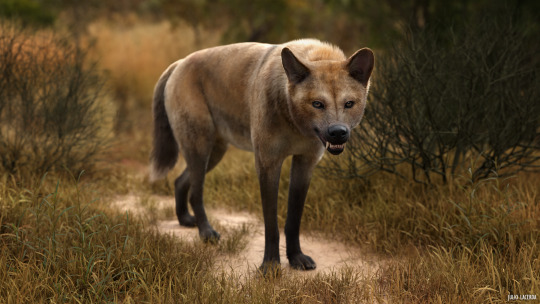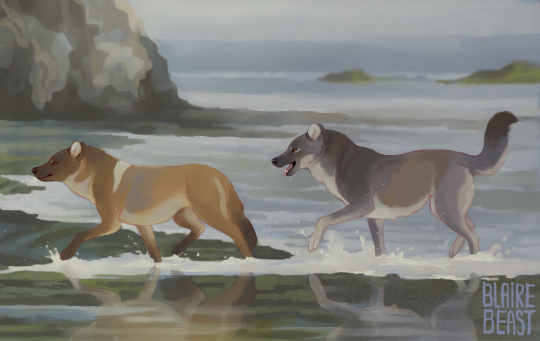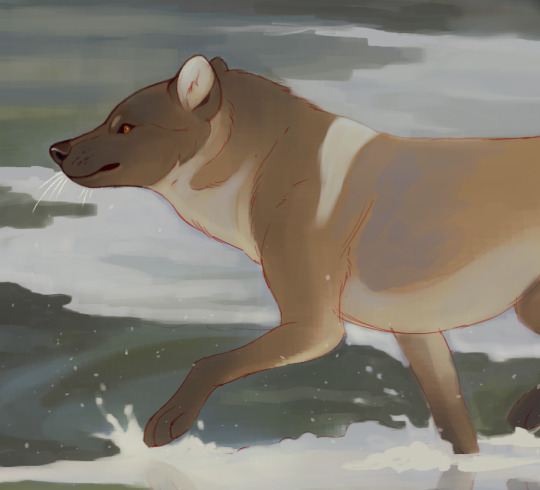#[ canidae ]
Explore tagged Tumblr posts
Text
OH MY GOODNESS My grandma is just like this. So I live on Pine Island FL, and we have a bit of a coyote problem. They're all over the place and are known to attack domestic dogs. My entire town is full of old people with primarily medium sized dogs. My grandmother is always spouting stories about how coyotes are so evil because they'll pretend to be friends with the dog and then kill and eat them.
First off, they're not befriending their prey. I'd assume it's to size them up?? And besides, I don't think dogs are even considered prey for the most part since they're usually somewhere in the same weight class iirc. I imagine the attacks happen due to canine miscommunication or if the coyote is really actually hungry and cannot find prey.
Second, COYOTES DO NOT HAVE THE CAPACITY TO BE EVIL. Evil is defined by morality and moral code, which coyotes ARE NOT SMART ENOUGH to have (and even if they were, their moral code would differ wildly from ours since they're still wild animals.) They're just animals trying to survive, and if that means killing someone's best friend, they'll do it.
Fascinated by the number of dog people who hate wild canines and flat up think they are evil. You would think way more people would love coyotes and African wild dogs and (not actual canines but certainly dog like) hyenas.
#I get so worked up every time#she genuinely fully believes that coyotes are evul#*evil#LIKE WOMAN PLEASE.#ohh sorry this pisses me off#coyotes#biology#ecology#canines#wolves#canidae#canidae family
3K notes
·
View notes
Note
If you're willing to share, what are your thoughts and opinions on the whole "dire wolf" situation?

They are not "Dire Wolves"
You can't do some gene editing to a gray wolf, and call it a dire wolf.
My feeling are summed up well in this article:
Scientists: No, those are definitely not 'resurrected' dire wolves
Scientists: No, those are definitely not "resurrected" dire wolves - Earth.com
272 notes
·
View notes
Text

An African wild dog (Lycaon pictus) guards her den
by Neil Gillies
#african wild dog#african painted dog#canines#lycaon pictus#lycaon#canidae#carnivora#mammalia#chordata#wildlife: africa
74 notes
·
View notes
Text


also completely forgot about having these two characters lol
big guy is achilles (hes a kangal) he was supposed to be my dnd (pugmire) character and keiko (shiba) is his wife hehe
#furry#art#furry art#anthro#furry oc#sketch#digital art#furry anthro#anthro art#dog#canine#canidae#dnd#dnd art#pugmire#kangal#shiba inu#transgender#digital#digital artist
24 notes
·
View notes
Photo
BTW this thing is more closely related to dholes than to wolves and dogs. So imagine hearing whistling instead of howling at night.

Dire Wolf (Aenocyon dirus)
Patreon • Ko-fi • Facebook • Twitter • Prints & Merch
#dire wolf#paleoart#extinct species#(THAT ARE STILL EXTINCT.)#art from others#canids#mammals#canidae#canines#dholes#aenocyon dirus#aenocyon
1K notes
·
View notes
Note
my dad just watched a video where an "animal genetics expert" claimed the dire wolf is "95% identical in DNA to the gray wolf". 😬
a common misconception, and one that was considered true up until very recently! the genetic evidence for aenocyon dirus being separate from the canis genus was only published in 2021.
in fact, the placement of dires within their own genus is so recent that most museums haven’t even updated their literature or signage to reflect this classification. when i visited la brea tar pits in 2023, all of their signage still listed dire wolves as canis dirus, a “close relative of modern gray wolves”.
new information takes a while to replace old understandings, which is what makes the current ‘ressurection’ debacle so frustrating. this company has to know that the majority of the public still believe that dire wolves are true wolves, and they exploited this misconception to misrepresent their findings as more significant than they actually are.
19 notes
·
View notes
Text
don't care + running + jumping + skipping + hopping + having fun + playing

#therian community#canine therian#theriotype#nonhumanity#wolf therian#therianthropy#caninekin#wolfkin#therian#wolf theriotype#wolf kin#canine kin#canidae#dog brain#dogkin#confessions of the dog
54K notes
·
View notes
Text










Coyote | Sheryl Hester
19K notes
·
View notes
Text
Also for all the people mentioning how cool it would be to reintroduce a long extinct species into the wild… no. Like I understand being excited, but even if they had gotten anywhere close to a dire wolf (which obviously they haven’t lol) there would be no way to release them anywhere. Ever. They would be kept fully in enclosures their whole lives as these genetically modified grey wolves most likely will be. It would make more sense to target recently extinct species which still have viable habitats. The only living species of megafauna left are moose, and the predator niche for them has been filled by modern wolves, bears, and humans. There would be nothing for a dire wolf to eat in the wild, they would compete with timber wolves (who are themselves a threatened species though I believe they’re doing a bit better population wise now).
Just thought I’d chime in as I’ve seen some excitement for releasing long dead animals into the wild. Luckily I haven’t seen very much of this sentiment, but just for anyone wondering about it. It would really fuck with the current ecosystem. So any long extinct animal would live their entire lives in captivity if there ever is an animal that is brought back from extinction like this.
Btw this is what a real dire wolf looks like - they’re more related to jackals than wolves:
(Source)


Not this - this is genetically modified hybrid made specifically to look like the wolf dogs that played the “dire wolves” in Game of Thrones:


Don’t fall for a multi million dollar company’s marketing hype - this isn’t science. This is the wealthy playing around with genetics while real grey wolves face brutal hunting seasons and their sanctuaries like Yellowstone get defunded.
#dire wolf#science#colossal biosciences#scammers#ecology#wolves#canidae#extinction#extinct animals#extinct species
362 notes
·
View notes
Text

Black-backed Jackals (Lupulella mesomelas), get into a squabble, family Canidae, Tanzania
photograph by Ward Poppe
6K notes
·
View notes
Text

#canines#animals#mammals#nature#wolf#wolf photography#wolves#photography#canidae#canids#wolf pup#wolf pups#wolf posting#wolf posts#canis lupus#grey wolves#grey wolf#gray wolf#nature photography#puppies
4K notes
·
View notes
Text

Two dire wolves
+closeups


#art#artists on tumblr#drawing#digital art#lizardator rw#oc art#oc#paleo art#paleoart#paleoblr#paleontology#paleobiology#canids#dire wolf#dire wolves#canidae#extinct animals#extinct species
696 notes
·
View notes
Text


Coyote Canis latrans
Observed by kriscu, CC BY-NC
#canis latrans#canidae#coyote#north america#canada#british columbia#aberration#aberrant coloration#another observation of what seems to be the same individual:#https://inaturalist.ca/observations/106398362
3K notes
·
View notes
Text

A pack of African wild dogs (Lycaon pictus) in the Okavengo Delta, Botswana
by Thomas Retterath
#african wild dog#african painted dog#juvenile#canines#lycaon pictus#lycaon#canidae#carnivora#mammalia#chordata#wildlife: botswana#wildlife: africa
57 notes
·
View notes
Text

🎃🐺🌘🍃
I don’t normally draw wolves or canid creatures in general but what would this account be if not for pushing me out of my comfort zone. Hopefully the whole crescent moon tail thing translates.
1K notes
·
View notes
Text
A recent study confirms what wildlife experts have been saying for years: hunting coyotes just gets you more coyotes. In areas where wolves have been extirpated, coyotes have often taken on the wolf's mantle as "that evil beast that must be destroyed at all costs or else they will eat our flocks and our families and ruin the world". This disproportionate hatred for a native canid often ends with people indiscriminately shooting, trapping, or poisoning any coyote they possibly can.
Instead of ridding their areas of coyotes, they often find that the coyotes return in larger numbers. The study doesn't surmise why that is, only reporting that the populations do not drop in response to killing. But Team Trash makes some good educated guesses.
Maybe we can stop responding to an animal that is inconvenient to us with "kill it!" and instead look at some of the many nonlethal ways to protect livestock, pets, and ourselves. We may have hunted and trapped wolves, bears, and mountain lions out of much of their historic ranges, but it's apparent coyotes aren't going away. they're a reminder that nature will persist in spite of our attempts to control it to the nth degree, and I see that as a good reminder to remember our place as part of nature, rather than separate from it. We can find better, mutually safer ways to coexist, but it starts with us ratcheting back our most extreme responses to anything that doesn't immediately do what we want it to.
#coyotes#wildlife#canids#Canidae#mammals#animals#wild animals#nature#ecology#environment#conservation#science#scicomm#animal welfare#animal behavior#hunting
790 notes
·
View notes